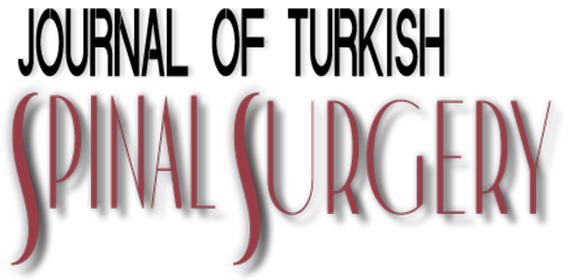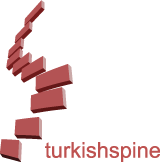ABSTRACT
Backround data:
Scheuermann’s structural kyphosis is the most common cause of kyphotic deformity in adolescents. The etiology of Scheuermann’s kyphosis remains unclear. Histologic studies have revealed abnormal vertebral endplate cartilage, irregular mineralization, disorders in vertebral ossification, and alterations in collagen aggregation with abnormal collagen-proteoglycan ratios. Growth hormone hypersecretion also has been related to the pathogenesis of Scheuermann’s kyphosis. Patients with the disease were found to be taller than the percentile mean height for their age. However, no studies exist to define causative relation between growth hormone secretion and Scheuermann’s disease and its role remains unclear.
Purpose:
The aim of the that study was to research the effecting of the growth hormone on the occurrence of the Scheuermann disease and also to evaluate of the correlation between the severity of the kyphotic curve of the Scheuermann Kyphosis and Growth Hormone.
Patients and methods:
16 female and 15 male patients with an average age of 14.4 ± 3.2 and having thoracic kyphosis angle >60° due to wedging in at least 3 levels, totally 31 patients were included in the study. Deformities of the patients were divided into 3 groups as 60° - 70° (12 patients), 71° - 80° (10 patients) and over 81° (9 patients). For all the patients’ antero-posterior and lateral x-rays and thoracic magnetic resonance imaging (MRI) were performed. Morning growth hormone levels were measured. All the patients were new cases and before conservative or surgical treatment serum growth hormone levels were obtained.
Conclusion:
In conclusion, according to the results of this study, growth hormone levels and severity of the kyphotic deformity are not statistically correlated. In other words, there was no correlation between Scheuermann kyphosis and level of growth hormone being close to the upper limit or higher than normal.
Results:
When all the patients are included global kyphosis angle average was 75.23° ± 9.65°. Averages were found to be, in 60° - 70° (12 patients) kyphosis angle group 65.92° ± 3.58°, in 71° - 80° (10 patients) group 75.30° ± 2.63° and in over 81° (9 patients) 87.56° ± 4.79°. 28 of the 31 patients (90.3%) growth hormone levels were in the normal range of the laboratory for 5-16 years in male 0-11 ng/ml and female 0-17 ng/ml. Only 3 male patients (9.7%) growth hormone levels were above 11 ng/ml. All the patients were over 8 ng/ml, 67.7% of the patients were over 10 ng/ml. When all the patients are included average morning fasting growth hormone concentration was 10.46 ± 1.48 ng/ml.



